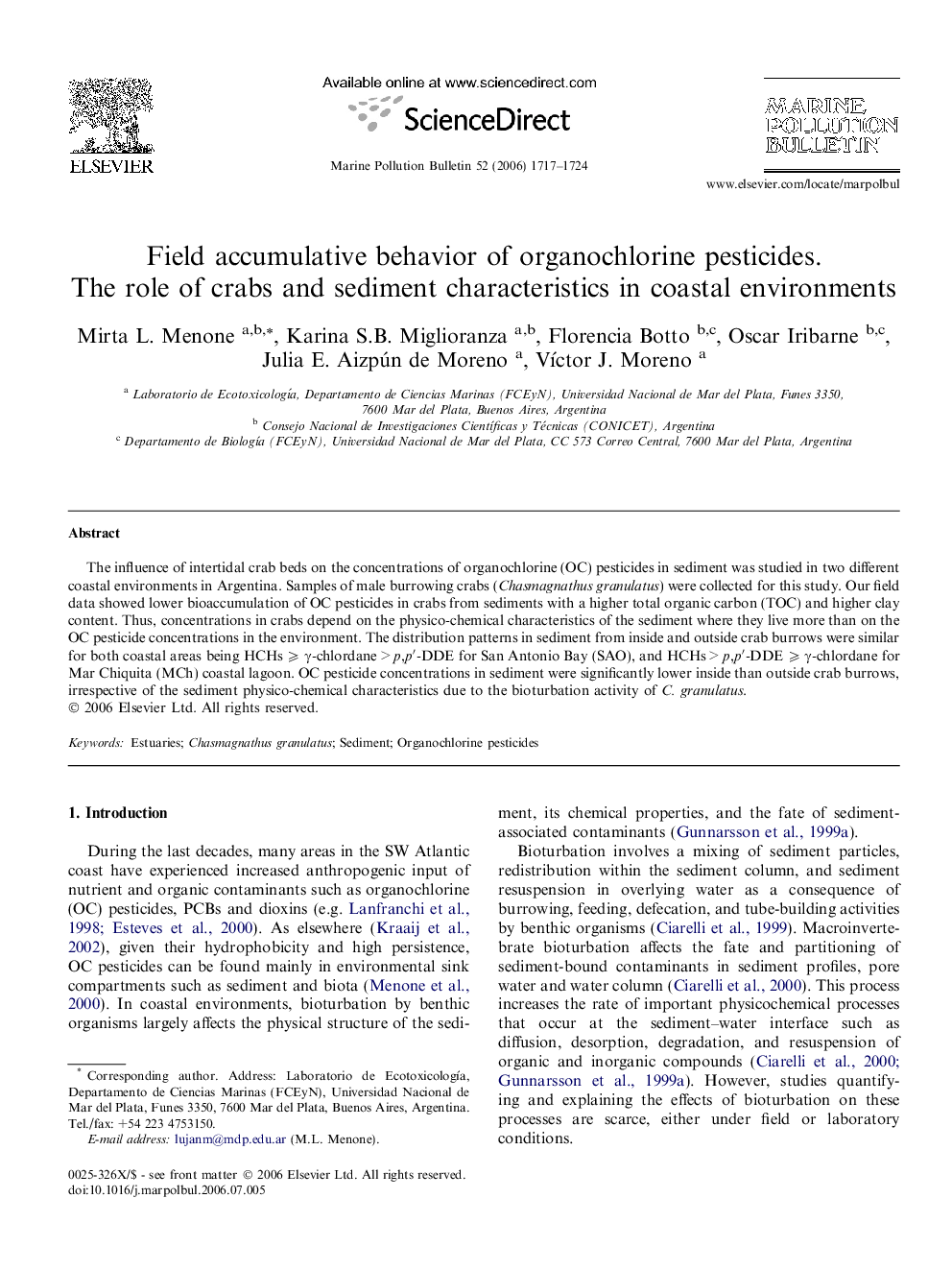| Article ID | Journal | Published Year | Pages | File Type |
|---|---|---|---|---|
| 4477928 | Marine Pollution Bulletin | 2006 | 8 Pages |
The influence of intertidal crab beds on the concentrations of organochlorine (OC) pesticides in sediment was studied in two different coastal environments in Argentina. Samples of male burrowing crabs (Chasmagnathus granulatus) were collected for this study. Our field data showed lower bioaccumulation of OC pesticides in crabs from sediments with a higher total organic carbon (TOC) and higher clay content. Thus, concentrations in crabs depend on the physico-chemical characteristics of the sediment where they live more than on the OC pesticide concentrations in the environment. The distribution patterns in sediment from inside and outside crab burrows were similar for both coastal areas being HCHs ⩾ γ-chlordane > p,p′-DDE for San Antonio Bay (SAO), and HCHs > p,p′-DDE ⩾ γ-chlordane for Mar Chiquita (MCh) coastal lagoon. OC pesticide concentrations in sediment were significantly lower inside than outside crab burrows, irrespective of the sediment physico-chemical characteristics due to the bioturbation activity of C. granulatus.
